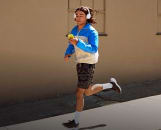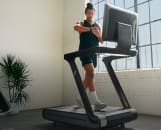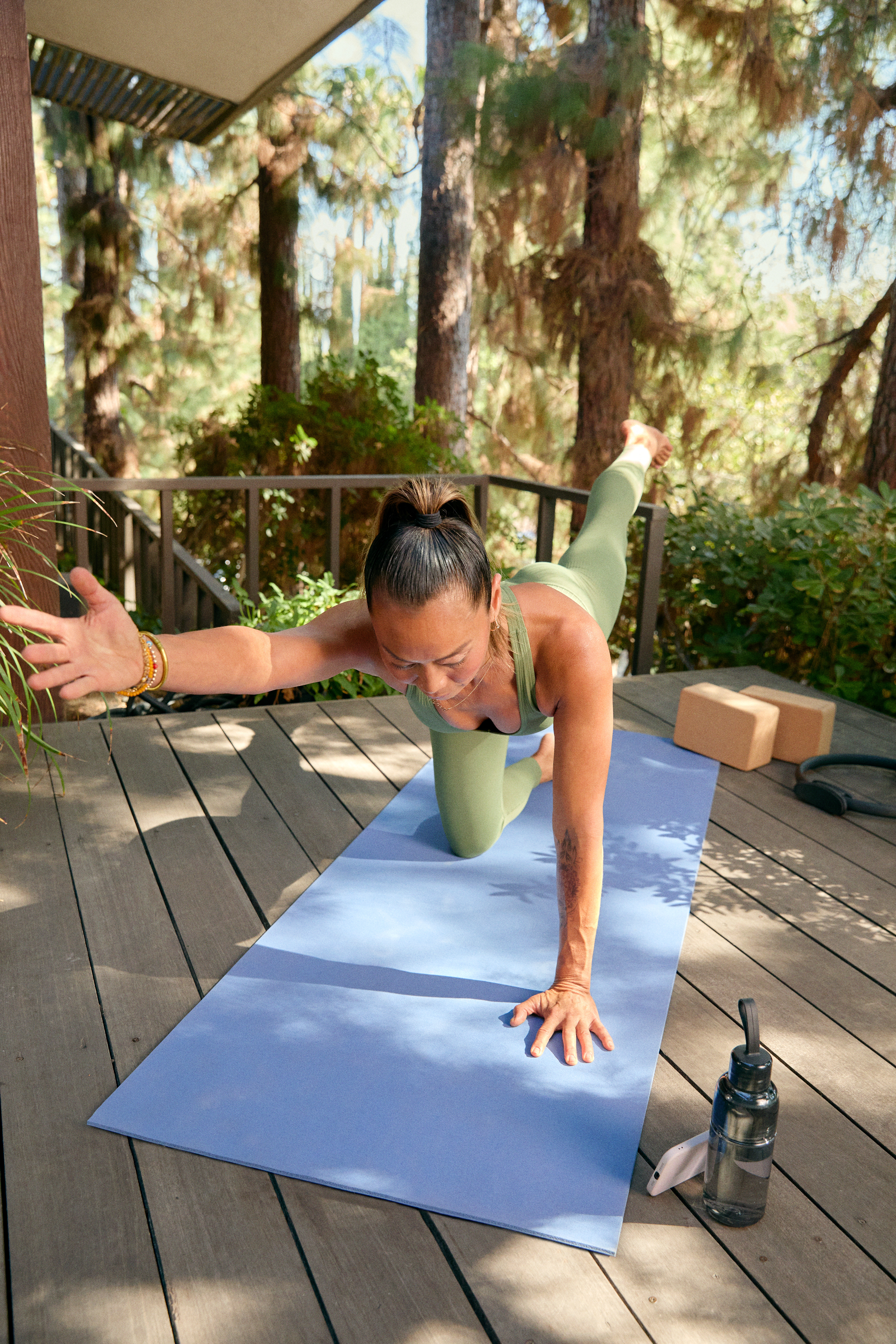
The Bird Dog Exercise Is an Essential for Core Strength and Stability. Here's How to Do It Right
Work a ton of muscles with this low-impact, posture-improving move that’s both accessible and adaptable.
By Michelle Konstantinovsky•
What Is the Bird Dog Exercise?
How to Do Bird Dog Correctly
Bird Dog Exercise Benefits
Which Muscles Does Bird Dog Target?
Tips for Doing Bird Dog with Proper Form
Mistakes to Avoid During Bird Dog
Bird Dog Variations
The Takeaway
It’s a move that pops up in a variety of fitness classes, from prenatal core workouts to the most intense bootcamps. And while it may seem straightforward, the bird dog is a serious strength-building exercise that’s not only accessible but also incredibly functional, helping to improve posture, alleviate certain types of back pain, and even help prevent injuries. But to truly reap the benefits of this powerhouse move, it’s important to understand the mechanics, the benefits, and the avoidable mistakes to achieve proper form. Here’s everything you need to know to tackle bird dog with confidence.
What Is the Bird Dog Exercise?
Bird dog is a bodyweight exercise performed on all fours (i.e., hands and knees) that requires you to lift one arm and leg at a time. It’s essentially like the dead bug exercise, but flipped over so your hands and knees are on the floor, instead of your back.
While bird dog it’s primarily considered a core exercise, it works a ton of different muscles (more on that in a bit), and can help promote stability and muscular endurance in a variety of body areas. It’s also a yoga pose—Bird Dog (Parsva Balasana). Bird dog doesn’t require any equipment and can be safely incorporated into workouts of almost all levels.
“It's a really accessible, full body movement that builds [strength and skills] that are going to improve your quality of life over a long period of time,” explains Peloton instructor Denis Morton. “Most of us aren't going to be lifting cars off of people in our lives, but we do want to be able to step off the curb confidently and reach overhead to get into the cabinets. Practicing these movements will make our lives easier over the passage of time.”
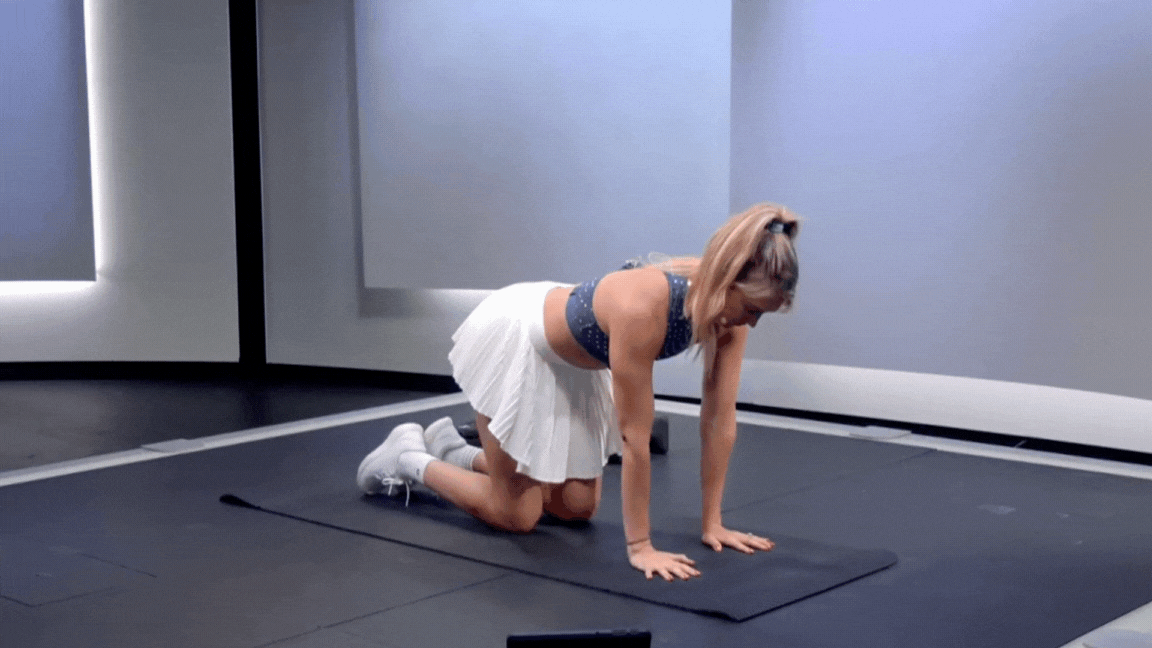
How to Do Bird Dog Correctly
Bird dog may look deceptively simple, but executing it correctly requires some practice and skill. Here’s how to perform it correctly:
Start in a tabletop position. “Get into a quadruped position on all fours with the hands under the shoulders and the knees under your hips,” Denis says.
Build a strong base by firmly pushing your palms into the ground. “The tendency sometimes is for the shoulders to collapse a little bit,” Denis says. “You really want to make sure that you're pushing the floor away to keep the muscles of the shoulder pulling the scapula down onto the ribcage, stabilizing the whole shoulder girdle.”
Find a neutral spine and engage your core. “Draw the abs in,” Denis says. Try not to arch or round your back, and keep your neck long, gaze on the floor just in front of your hands.
Simultaneously lift your right arm straight ahead, bicep by your ear, and extend your left leg behind you at hip height. “This creates an inherent instability by keeping one point of contact on either side of your body on the ground,” Denis says. Keep your core engaged; don’t allow your back to arch or your arm or leg to lift too high.
Hold for a few seconds. Then, lower both limbs to return to the starting position, and repeat with the left arm and right leg. Alternatively, you could perform several reps on one side, then switch sides and perform the same number of reps on the other side, Denis says.
Bird Dog Exercise Benefits
The subtlety of the bird dog may challenge the expectations of exercisers who believe every workout move needs to be as intense as possible. Rather than focusing on maximum power, speed, or load, bird dog is meant to challenge the body in more subdued but equally important ways.
“It's a full body exercise designed more to build stability, balance, and coordination than it is strength,” Denis says. “Because while you’re load bearing, a lot of the load is borne by your knee and your hip, which are really strong to begin with. You're not challenging the muscles that are holding you off the ground in the same way that you would with something like a sit-up, where you're lifting the entire weight of your torso and head off the ground with just one small muscle group. With the bird dog, you're not putting enough load on any particular muscle group to make it a real strength activity.”
That being said, not every exercise is designed to improve your brute strength or result in major muscle growth (aka hypertrophy). A well-rounded fitness plan includes functional moves and activities that help you thrive in everyday life, and the bird dog is definitely a practical, longevity-focused exercise worth incorporating into your routine.
“It's great for your posture and your body awareness,” Denis says. The move helps you balance muscle contraction on all sides of the body, which he says is a key benefit. "Our bodies aren’t relaxed in the bird dog; when we’re in that position, the muscles all have to stay in balance in order to hold us there.”
Try a Core Strength Class on Peloton
Which Muscles Does Bird Dog Target?
While the bird dog may not be a traditional strength exercise, it still works a long list of muscles, training them to work in harmony, and allowing you to move through life with more stability, balance, and coordination over time. Here are all the muscles that work hard in the bird dog:
Shoulders: “When you’re pushing the floor away, you're getting a lot of shoulder work,” Denis explains. The serratus anterior, a chest muscle that wraps around the ribs, works to stabilize the shoulder girdle, and the deltoids help you to extend your arm, he says.
Back: During bird dog, the lats—the flat, broad muscles on the mid-back—help to stabilize the shoulder, keep the neck long and strong, and hold the head in line with the body, Denis says.
Glutes: Both the gluteus medius and gluteus minimus—muscles that help stabilize the hips and pelvis—work to internally rotate the hip (think: keep your knee pointing down at the floor) during bird-dog, and the entire move helps light up the glute max, the largest of the glute muscles. “You're getting the glute max in the extension of the leg,” Denis says.
Core: While you may not feel the burn in your core the same way you would with other moves (looking at you, hollow body hold), the bird dog is still one of the ultimate ways to target your ab muscles. “The transverse abdominis lights up for anti-rotation work and the rectus abdominis stabilizes and draws the abs up and in,” Denis says.
It’s safe to say the bird dog is a full-body move that touches on a ton of muscles, head to toe. “Everything is working in unison in order for the movement to go smoothly,” Denis says. “And because it’s a relatively light lift, it’s a really accessible exercise that incorporates most of the major muscles of the body in order to build stability and coordination.”
Tips for Doing Bird Dog with Proper Form
“What fires together, wires together,” Denis says. “Neurologically speaking, if we do things with poor form, we'll bring those same muscular connections and firing patterns with us when we stand up from the exercise. So you want to practice good posture anytime you're doing one of these exercises.”
While bird dog may seem like a simple move, there are a lot of form cues to keep in mind. Here is Denis’s go-to checklist:
Keep your head in line with your body by keeping the neck and spine long and neutral.
Keep the abs drawn in and up.
Protract the shoulder, meaning push away from the floor to move your shoulder blades forward and away from each other.
Make sure the hip of the extended leg is internally rotated; keep your knee pointing straight down at the floor. As Denis points out, there's a tendency for people to open the hip to the side and “turn it into a modified side plank.”

Peloton App
Access thousands of classes with no equipment needed.
Mistakes to Avoid During Bird Dog
In addition to focusing on the proper form to-dos, it’s important to be aware of the most common bird dog mistakes so you can really reap the benefits of the exercise and avoid injuries. Here are some points to keep in mind:
Not engaging the core. “The most common form cue that I give is to draw the abs up, because we have a tendency to just sink into the shoulder and rest on the knee,” Denis says. “So you really want to keep the abs drawn in.”
Not moving the shoulders forward and away from each other. “Protract the shoulder in order to extend the arm forward and to stabilize,” Denis says.
Not maintaining proper alignment. “It’s important to keep your head in line with your body,” Denis says. Don’t lift your chin to look forward or curl it down toward your chest.
Bird Dog Variations
Depending on your fitness level and experience, you may want to progress or regress the classic bird dog. While hand and ankle weights could theoretically up the intensity of the bird dog, Denis says you’d probably be better off looking for those strength gains in other exercises. “I think that there are more efficient and effective movements to achieve the same result,” he says. “Once you're talking about adding weight to a bird dog, it might be more beneficial to progress to a more challenging movement—that would be my personal recommendation.”
Here are a few of Denis’s favorite ways to mix things up.
Single-Arm or -Leg Bird Dog
Rather than lifting an arm and leg simultaneously, you can make the move slightly easier by just moving one limb at a time. “You can regress it by simply taking a hand off the ground or a foot off the ground, which are both going to challenge your stability,” Denis says. “You could absolutely keep everything the same and do it one limb at a time just to build the coordination and firing pattern.”
To further modify the move, you can also put the ball of the extended foot behind you on the ground for more stability. As you progress, try slowly lifting the back foot off the ground, which engages the hamstring and forces you to rely on just the knee for balance. “Or as you extend the hand forward, you could put fingertips on the ground and float the foot behind you,” Denis says.
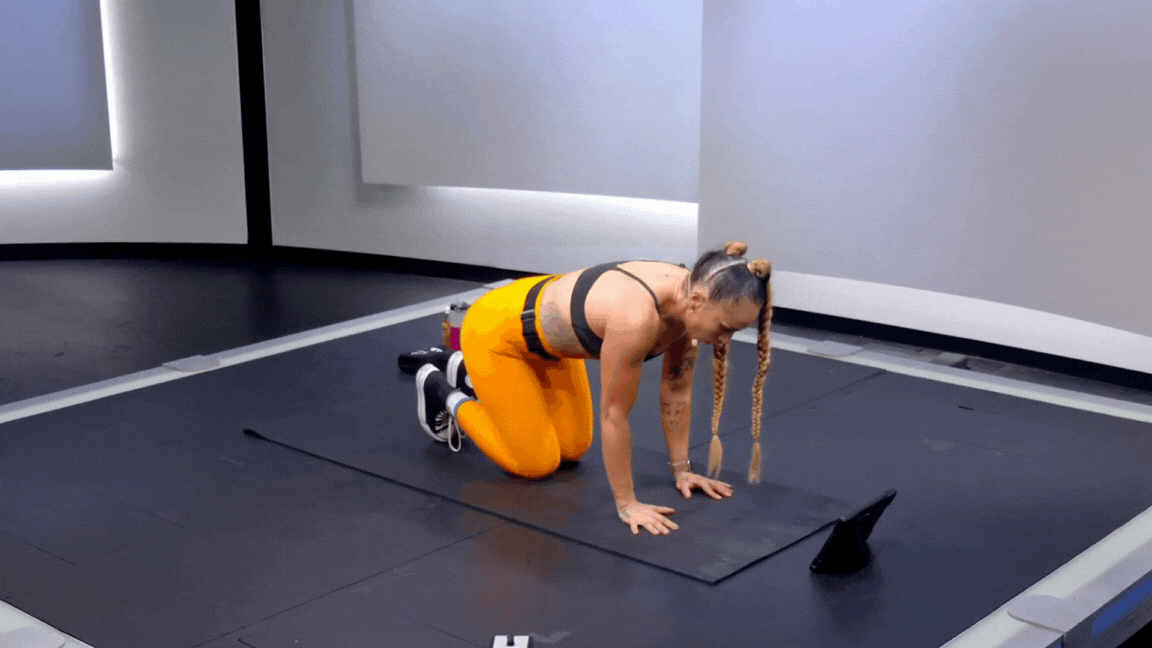
Lateral Bird Dog
Another move to try is lateral abduction, which means opening the hip, extending the leg out to the side, and extending the arm to the opposite side. “This challenges your lateral balance and really engages the transverse abdominus in pursuit of anti-rotation,” Denis says.
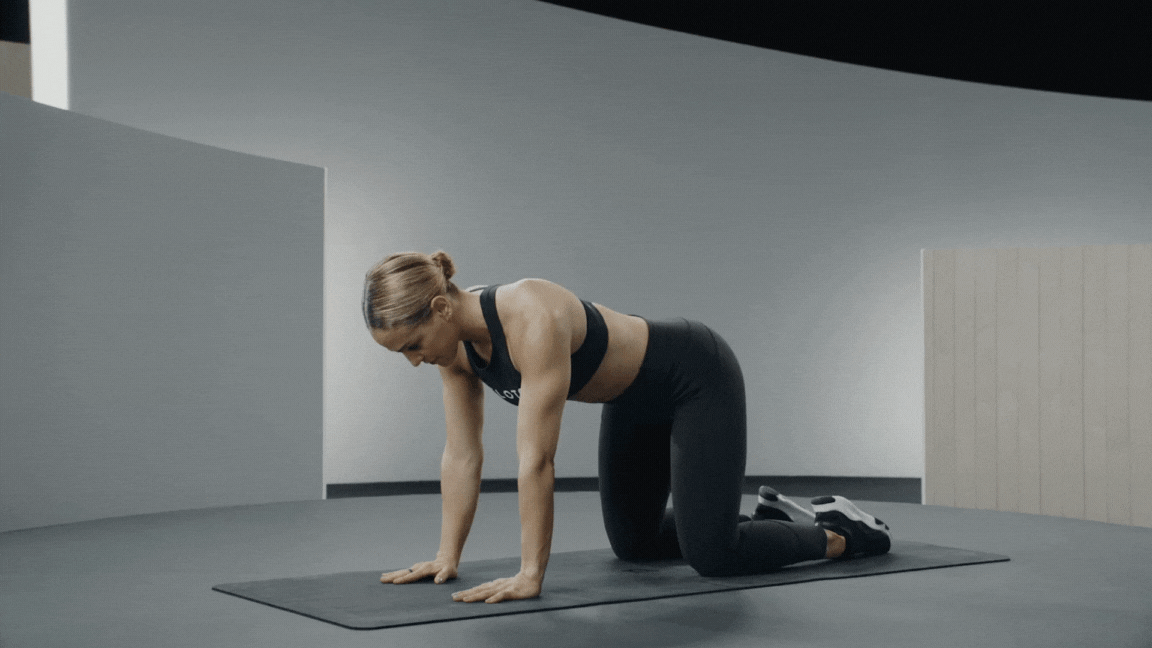
Bird Dog Crunch
Another way to progress the exercise is to perform additional movements with your lifted limbs. Instead of bringing your extended limbs back to the ground to rest between sides, try drawing your elbow and knee toward each other underneath your stomach in a crunch motion.
“Instead of just reaching forward and returning to quadruped, you reach forward with the arm and back with the leg and then bring the opposite elbow and knee together underneath you while drawing the abs up,” Denis says. That will give you a little bit more of a strength challenge, he says.
The Takeaway
Crushing your core doesn’t always have to mean performing dozens of crunches or working to feel that unmistakable ab burn. The bird dog is a great example of a core move that can help improve your stability, balance, and coordination, no matter where you are in your fitness journey. While the exercise is simple and accessible, it works a ton of muscles, including those in your shoulders, back, glutes, and core.
Integrating the bird dog into your workout routine—whether you do it as part of a dedicated core strength workout or a full yoga flow on the Peloton App—will not only help you gain more control of your body in other fitness modalities, but it will also allow you to continue being mobile, active, and strong as you navigate aging and body changes over time.
This content is for informational and educational purposes only and does not constitute individualized advice. It is not intended to replace professional medical evaluation, diagnosis, or treatment. Seek the advice of your physician for questions you may have regarding your health or a medical condition. If you are having a medical emergency, call your physician or 911 immediately.
Level up your inbox.
Subscribe for a weekly dose of fitness, plus the latest promos, launches, and events.
By providing your email address, you agree to receive marketing communications from Peloton.
For more about how we use your information, see our Privacy Policy.
